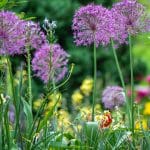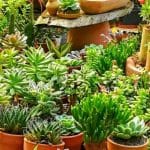Table of Contents
Digits and gallons, charts and rainfall, meters and buckets; isn’t it tough luck to embrace horticulture in your backyard and suddenly find yourself getting acquainted with all these things? You see, it might look like rocket science at first glance, but understanding how to water your plants correctly is as easy as baking a potato in the microwave. All right, maybe not that easy, but it’s not far off. It’s a truism that each gardener ultimately needs to confront; figuring out the right amount of H2O for those leafy tenants can be a tad ambiguous. Imagine it’s a blistering summer day and your garden is thirstier than a camel in a desert, hollering for a whopping 62 gallons of water. Yes, that’s correct, sometimes a 100 square-foot garden area might require up to 62 gallons of water for a proper drench.
But lo and behold, dear reader, you need to tread carefully with watering. Too little, and your precious tomato plants start looking like a wrinkled shirt left overnight in the dryer. Too much, and you’ve got yourself a fancier version of a paddy field minus the rice. It’s all about finding the sweet spot, and to master that watering game, you need to unwrap what scientists like to call ‘contextual factors.’ Hold on to your hats, because the science of garden watering gets savagely interesting from this point.
Understanding the Importance of Watering Your Garden
The business-end of backyard gardening isn’t merely about sowing some seeds and hoping some “green magic” will happen. It often goes beyond just “water each week” or “water more often” during the growing season. The importance of watering boils down to understanding a few significant components that gel together the entire enigma of gardening. In the most elementary sense, your garden plants are as good as the conditions you grow them in, and this includes how often you water, the amount of rainfall, and the soil’s water retention capabilities. Neglect any of these elements, and your summer dreams of water gardens brimming with marigolds and tulips can capsize like a leaky boat. Remember, your plants need water to thrive, and watering more often might just be the magic potion to turn your garden into Eden’s paradise.
Why Watering a Garden Is Essential
Why should you feed your garden a healthy diet of water? Put simply, your plants can only chow down on nutrients when they’re dissolved in water. Think of it like this – you can’t eat cereal without a dash of milk, can you? No water means your plants run the risk of choking on their food, much like you trying to gulp down a mouthful of dry corn flakes. In simple terms, frequent watering in the growing season is a must, especially during dry spells. But remember, the best way to water gardens is not by flooding them like Noah’s Ark but by giving your plants steady sips. For your garden plants, the formula ‘water each week’ often translates to ensuring that the moisture in their surroundings stays consistent. Plants need water, but they also need balance. Now isn’t that a fancy bit of water wisdom!
The Impact of Drought on Your Harvest
We all love a sunny day perfect for a backyard barbeque. But when the sun overstays its welcome, that’s when your leafy pals start having a hard time. With water a no-show in the show of life, even hardy plants can suffer from drought stress. Imagine lettuce and spinach wilting faster than a balloon with a pinprick. With the moisture in the soil drying up, delivering 62 gallons of water might be the rescue the doctor ordered for your thirsty vegetable patch. Techniques like drip systems, using raised beds, and keeping track of how wet the soil surface is with a rain gauge can be your secret sauce to combat this spiteful sun. Patience and persistence are the game here, and timely watering can turn those sandy soils into a haven of moist warmth perfect for the roots of your plants.
Overwatering: Does It Hurt Your Gardens Too?
Too much of a good thing can be dreadful, and watering your plants is no different. Overwatering is like spoon-feeding your plants too much candy; sure, they love the sweet high, but then comes the sugar rush and the teeth (or in this case, root) decay. If you persist on watering more often than required, it could simply mean more trouble for your leafy family. That said, the balance between those two extremes – drought and overwatering – is the crux of successful gardening. It walks a tightrope, but sheer mastery of that balancing act always lands you a garden worthy of a gasp and a gawk.
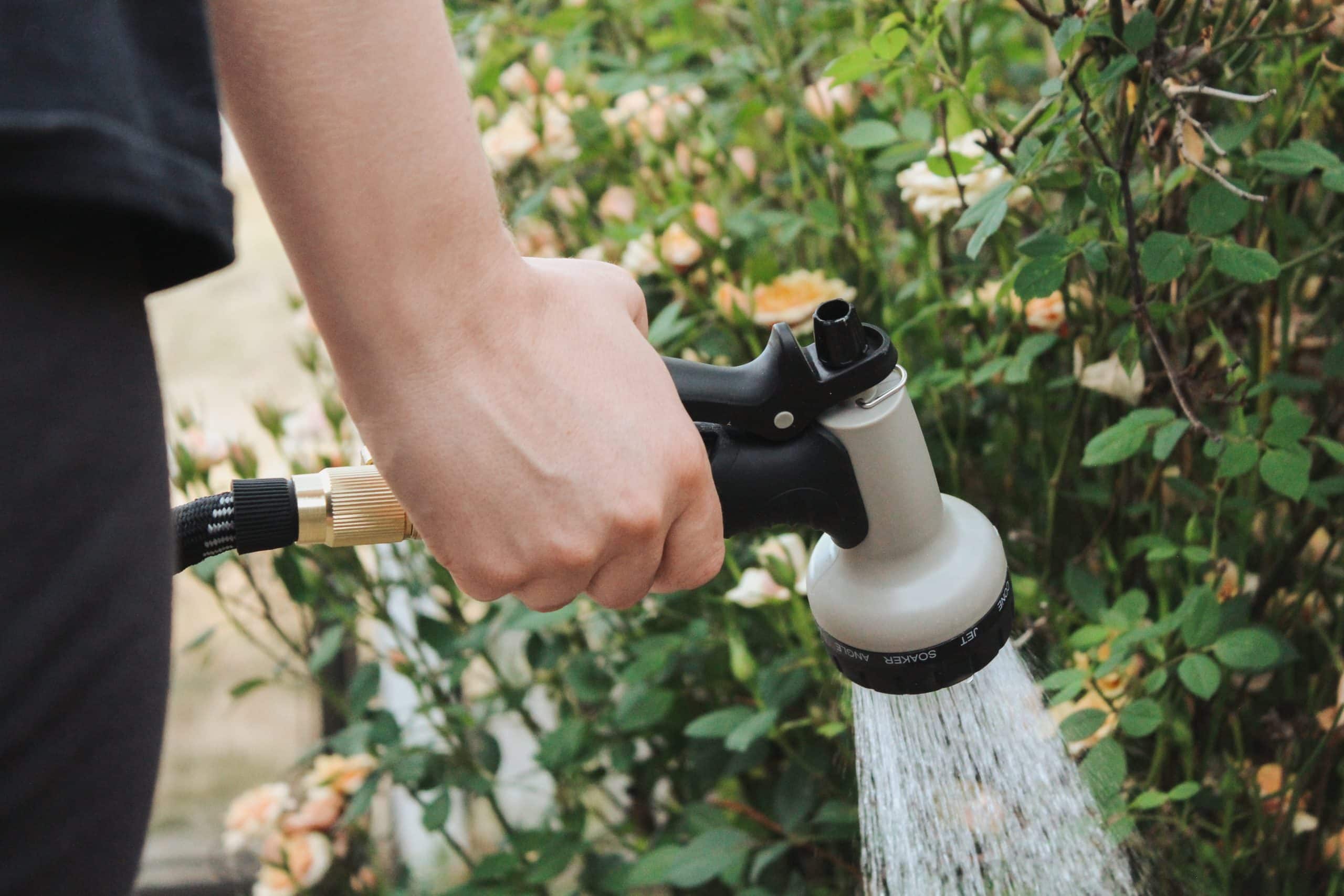
Decoding the Ideal Watering Frequency for Gardens
Decoding this watering frequency involves a bit of observation, experimentation, and a sprinkle of common sense. Like butter on toast, the watering schedule for garden watering should perfectly melt into your garden conditions. Understand the water needs of the plants in your raised garden beds. Keep in mind a golden rule – water deeply, and water less often. A soil moisture meter in your arsenal can be no less than a magic wand, guiding you on when and how often you should water. The frequency and volume of watering are all about getting those little details right – just like getting your favorite brew perfect!
How Often Do You Water a Vegetable Garden?
“How many counts of Z in my sleep do I need before flooding my green buddies?”, you might wonder. The answer intriguingly depends on many factors. But fret not, for there are a few stars you can navigate by. A foolproof watering schedule, sound garden watering knowledge, and understanding the unique needs of your raised garden beds grant you a head start. One general rule of thumb seems to garner the nod of veteran gardeners – water less often, but water deeply. A thorough, deep soak followed by a little drying time before the party starts again can just about do the trick. So next time you drain your greenery, think like a sponge – get it fully soaked, and then let it have its drying time.
What’s the Watering Schedule for Raised Vegetable Gardens?
When it comes to raised vegetable gardens, there’s no one-size-fits-all when it comes to watering. The watering schedule of raised vegetable gardens is complex and it all depends on various factors like soil type, climate, plants that are being grown, and what kind of water system you’re using. For instance, a drip system, recommended by Colorado State University, waters slowly, allowing the wet leaves and plant roots to take in adequate amounts of water. Lowering the water outflow and placing the hose at the base might make it a bit time consuming process, but guarantees the water to soak into the soil thoroughly.
Frequency of Watering for Newly Planted Vegetable Gardens
Newly planted vegetable gardens, like babies, need more frequent care and attention when compared to established vegetable plants. Young vegetation is sort of like a new-born – it requires delicate care and a bit more watering. And much like a newbie in the city, they need to be constantly watched over and nurtured appropriately. Let’s just say, a daily sprinkle may be necessary, peculiarly if the climate is hot and dry. But bear in mind, even like us, plants also don’t like to be coddled all the time. Overwatering may turn out to drench the soil, depriving plant roots of air.
Watering Frequency for Container Vegetable Gardens
Contrary to popular belief, veggies in container gardens tend to dry out faster than veggies in the ground. Wait, what? Yes, you heard that right! Basically, the container creates a limited environment that restricts the reach of the growing plants’ roots. Hence, for container gardens, you might want to check the moisture daily and possibly water them daily or even more than once during hot, dry weather. So, play it by ear. Use your finger to check the soil. If it’s dry, give it a sprinkle!
Fact Checks and Quick Tips on Garden Watering
Alright, let’s bust some myths and share some quick tips about garden watering. The soil type also plays a crucial role in watering. Sandy soil is not the same as clay. Sandy soil lets the water flow freely while clay soil tends to hold on tighter. So, if you have well-drained soil like sandy, it may demand more frequent watering once a week – being a smooth talker with the unquenchably thirsty one!
The Common Misconception About Daily Watering
A very popular myth amongst folks is that gardens need to be watered daily. Now, ain’t that a tall tale! Overwatering not only leads to water wastage but also promotes shallow root growth making your plant leaves weak, like a wet noodle in a pot of ramen! Remember, gardening is all about balance. It’s important not to go with “too much of a good thing.”
Explaining the One Inch Rainfall Per Week Rule
Now this one might be a game changer. Ever heard of the ‘one inch rainfall per week’ rule? Well, it’s just like baking a perfect cake. Too much water can drown it and too little can parch it. A rain gauge can be your best pal in this instance. This rule simply implies that your garden soil, be it sandy soils or any other, should receive at least one inch of water (either from rainfall or watering) in a week. Let the “sky water” settle the dust!
How Using a Water Meter on Your Hose Helps
Just like how you watch the gas meter while filling up your car, a water meter on your hose can save your precious plants from drowning. These bad boys help measure the amount of water being released, helping you to avoid any overwatering situation. It’s about giving them a drink, not flooding their home!
Why Your Garden Might Require a Different Watering Schedule
Now, not each garden has the same taste, right? Some gardens might like a different dancing routine. The plant types, the climate, the soil type, the sun exposure, and many other factors will determine your watering schedule. Consider it as the rhythm of the garden- you don’t want to miss a beat!
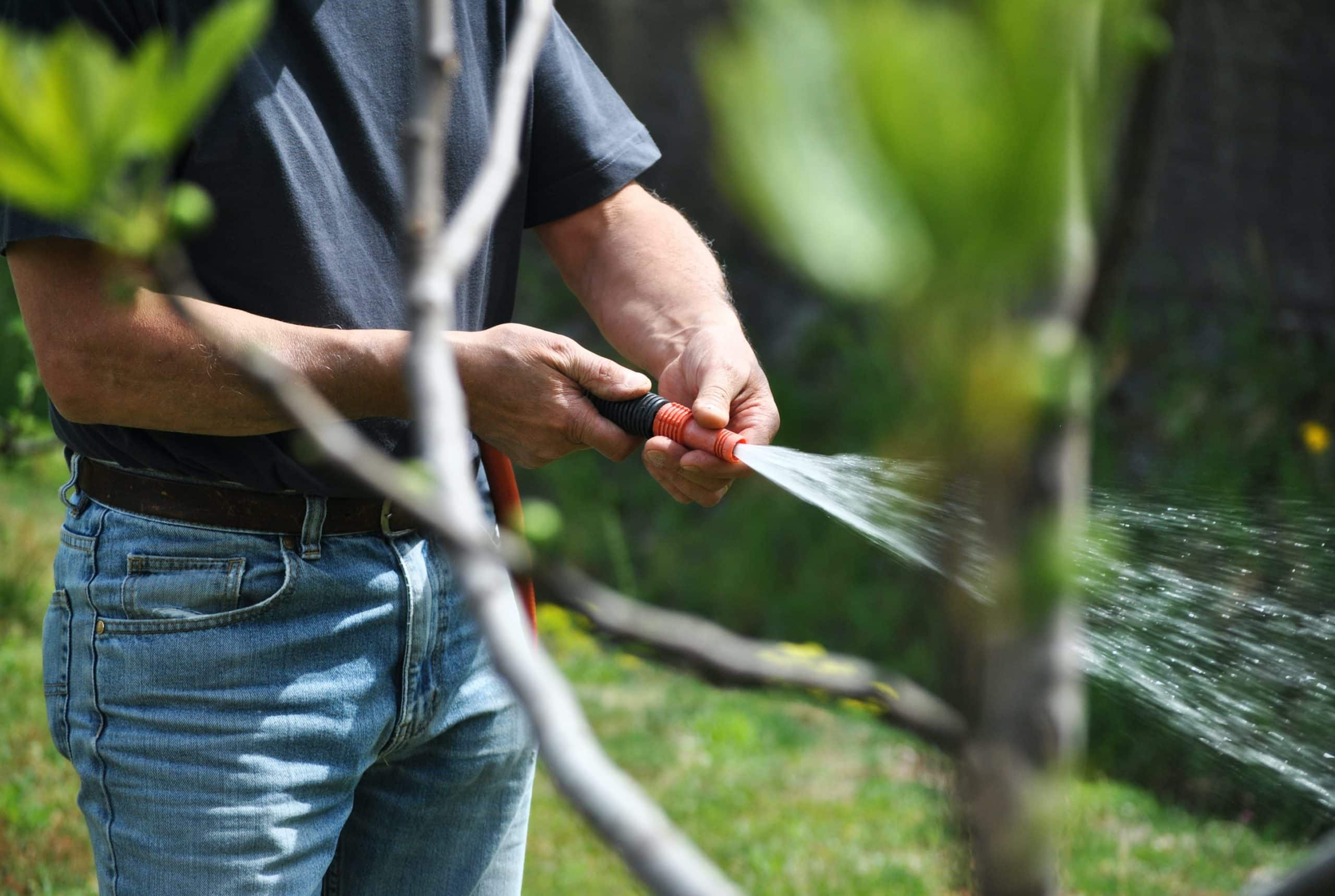
Deciding When and How to Water Your Garden
People often underestimate the rationale behind watering gardens and the significance of timing in doing so. However, that can make all the difference if your goal is a thriving garden. Understanding the ideal times to water your vegetables and the factors that determine your watering times can optimize the benefits.
The Ideal Times of Day to Water Your Vegetable Garden
Think about it this way, watering your vegetable gardens during the sweltering heat of noon is not practical as most of the water evaporates before it can reach the roots. So, the water is essentially lost to evaporation. The best time to water your vegetables is early in the morning when it’s still cool, and more of the water gets to soak into the soil. This timing means your plants get to sip on that water all day, absorbing the essential nutrients and moisture they need. But if mornings don’t work for you, late afternoons or early evenings are your next best bet. But remember, daily watering schedules depend on several factors!
Factors that Determine Your Watering Times
Each garden and gardener will have unique watering needs based on various factors. The watering schedule you maintain should be adjustable to cater to variables such as weather condition, plant type, and even soil type. It’s not a blanket approach. Observing your garden is the foolproof way to establishing a watering schedule that ensures your greens’ optimal growth and development.
Useful Strategies to Optimise Garden Watering
Optimizing garden watering isn’t rocket science, but it’s not just about pouring water on your plants whenever you feel like it, either. There is always a method to the madness. From checking the soil conditions regularly to devising strategies for weather challenges, it’s a combination of best practices, ingenuity, and science.
Checking Soil Conditions to Decide Watering Time
Reading garden soil conditions can be as simple as sticking your finger into the ground to check the moisture level. From the soil surface to few inches deep, the soil condition should give you cues about watering. If the soil is dry, it’s like a dinner bell for watering time. Monitoring the moisture in the soil shouldn’t be a super complicated task but a regular habit before feeding your plants.
Strategies for Dealing With Little or No Rainfall
When the weather plays a grinch and rain is like a mirage, or you live in an area with less rainfall, your garden doesn’t have to resemble the Sahara Desert. There are several strategies that you can implement to keep your green buddies hydrated, from installing watering systems that drip-feed your plants to conserving water in the soil with mulch. It’s nature’s game, you just gotta play along!
Persistent Myths About Garden Watering
From how much to water, when, and even the pattern of watering, the world of garden watering is riddled with myths that can make you scratch your head in confusion. The truth is, understanding your garden’s unique needs and tweaking your practices can contribute to a healthy garden way more than blindly following age-old myths.
The Truth Behind Most Common Watering Assumptions
Believe it or not, most of the common watering assumptions people harbor stem from misinformation or half-baked truths. For instance, the belief that plants only absorb water through their roots is debunked by the fact that plant leaves actually play a crucial role in regulating water consumption. Stuff like that, you know. The truth is a constantly evolving story with science backing it up.
When Is It Appropriate to Break these Assumptions
Taking a step back from regular watering can be beneficial in certain circumstances. Shifting climatic conditions, changes in plant growth phases, or simply the nature of the plant can necessitate deviating from your normal watering routine. It’s like making exceptions to the rule when it suits the situation best.
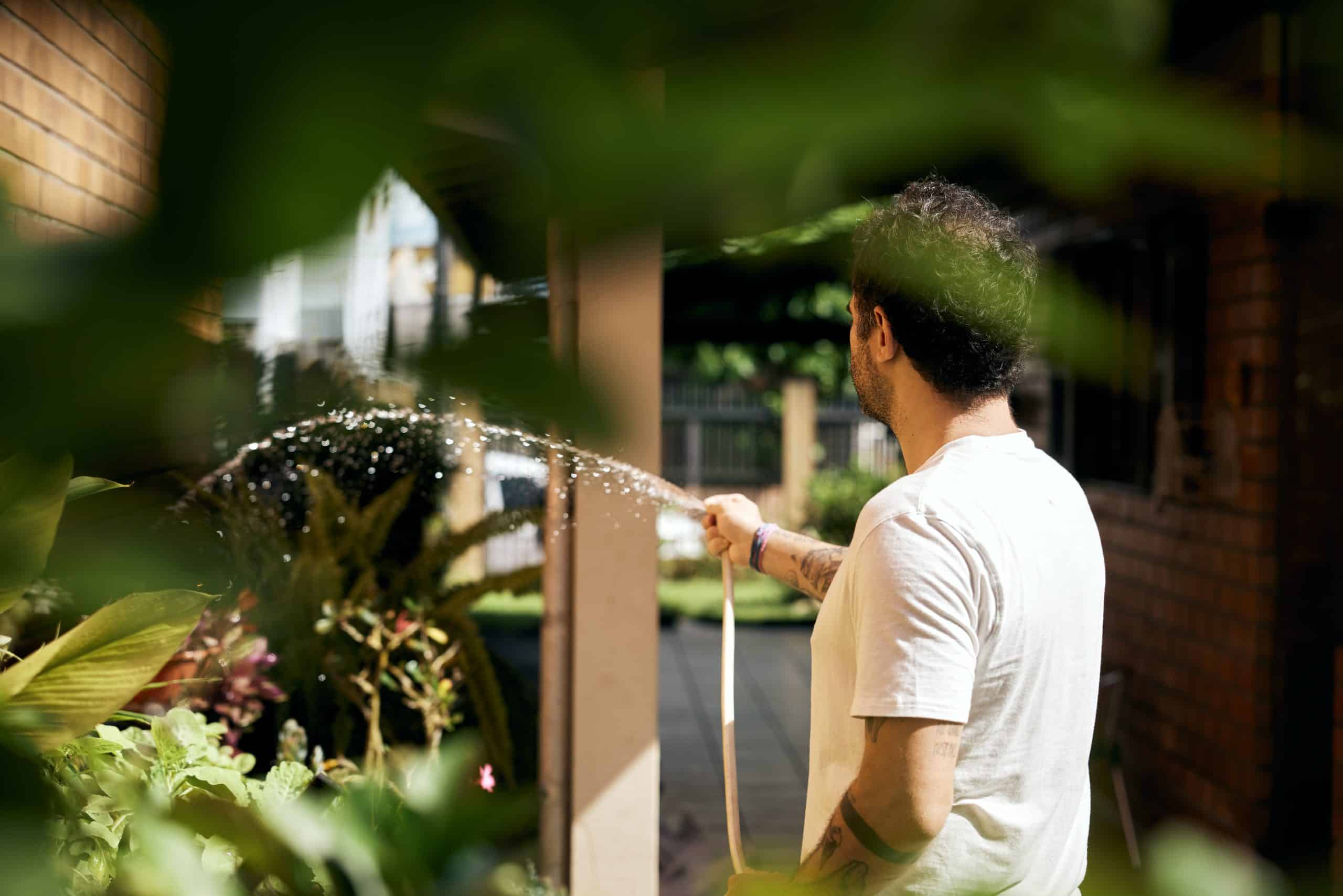
Selecting the Right Watering System for Your Garden
Just like selecting a car or choosing your favorite brand of peanut butter, picking the right watering system for your garden is a matter of personal convenience and garden needs. It’s about considering your soil type, plant variety, local climate, and, of course, your garden size. In the end, a watering system should ease your burden, not complicate your gardening routine.
The Benefits and Drawbacks of Different Watering Systems
Take it from folks working with their fingers in the dirt, the watering systems are plenty, each with its own pros and cons. Spray or overhead watering, for instance, like a summer rainstorm nurtures the entire plant, leaves included, which can benefit mature plants. However, in places prone to wind or heat, this type of watering can evaporate quickly, leaving your green friends thirsty and you wasting water. On the other hand, we have systems like soaker hoses, drip irrigation, or flood irrigation, get the water right where you want it: in the roots. Better water control, less waste and yet, sometimes they rob plants of that refreshing full-body soak. Every system has its day in the sun and shade, depending on conditions.
Wrapping Up: It’s Not Just About Watering the Garden
Remember folks, giving your green buddies a drink is just one part of the story. There are other factors dancing around the pot too.
Don’t Forget to Mulch!
If your garden’s in a dry zone, make mulch your new best friend. Adding a good ol’ layer of mulch not only keeps the soil cool but stops the moisture from saying ‘goodbye’ too quickly. You’re reducing water loss from the surface and keeping the plant moist and happy—a total win-win. Just remember to replace that mulch, especially after a rough growing season. They did their part, now let’s do ours.
Caring for Specific Vegetables: Unique Watering Needs
Every plant’s got its own personality, and your veggies are no different. Some like it loaded; others want their drinks on the rocks. Take lettuce for example, it loves a good soak, while beans are fine with just a weekly gulp. Gets a bit complicated, doesn’t it? But hey, at the end of the day, we’re all just tryna give our little green buddies what they need.
Things Not to Forget During End of Season Gardening
End of season can mean a lot of cleanup and prep work. Tying loose ends, bundling away, ensuring the plants are ready for their winter nap. Among these tasks, don’t skip on spreading out a fresh layer of mulch. It’s a blanket of love that will keep the soil moist and protected, ready to welcome spring with open arms. Ain’t no reason to make our plant pals feel unloved now is there?
Keeping Up With Your Garden During Vacation or Absence
Plant-loving parents like us worry when we gotta leave our green babies behind. But there are ways around it. Set up a drip irrigation system for constant care, or get a friendly neighbor to help out. Your garden can thrive without you, just needs a little pre-planning.
Pre-vacation Watering and Care Tips and Tricks
Give your plants a good soak before you head out and arrange for a helping hand if you’re away for a while. Your plants might just miss you a tad bit less with these tricks.
Final Thoughts on How Often Should You Water a Garden
Watering a garden, especially dedicated to vegetable gardening, is an art as much as it’s a science. From light rain showers to the peak of summer, every change in the climate necessitates tweaks in your watering schedule. A flower bed might need a different regimen than your containerized veggies, so growing guides can come in very useful.
Healthy soil retains moisture longer, especially clay soils, keeping your plants hydrated even under the blistering sun. When rain or irrigation is scarce, deep roots can extract this moisture and ensure the plant stays buoyant. So when you’re watering your plants, always maintain a moist soil for deeper penetration. Remember, a healthy plant is judged by the palm of your hand, and if the soil sticks without being wet, you’re likely watering your garden just right.

I’m John, a “seasoned citizen” and an avid gardener. I live in Minnesota, where our weather and growing conditions can be harsh and challenging. Over the years, I have learned a thing or two about being successful in growing things. I have curated these tips, which I think are helpful for the beginning gardener and the seasoned experts. If you have feedback, let me know in the contact form.


